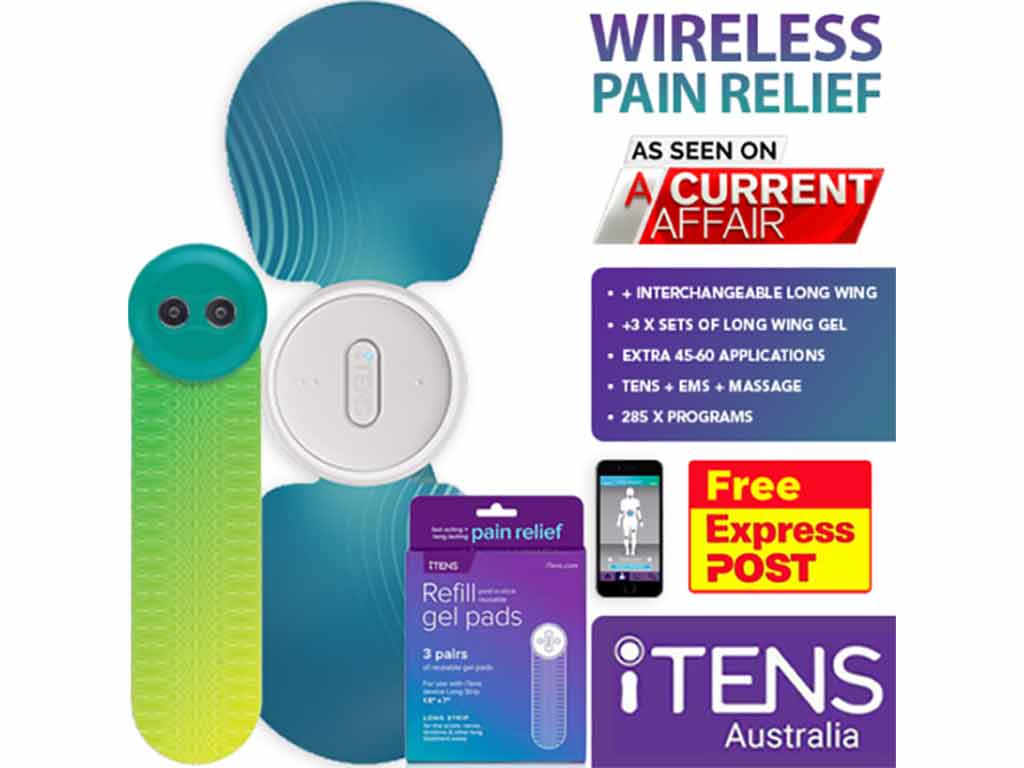
A sprained ankle is a common injury that causes pain in the ankle joint. A Transcutaneous Electrical Nerve Stimulation or TENS unit for sprained ankle is a valuable tool in managing the discomfort and promoting healing. However, proper usage is necessary to yield the desired results. For instance, people should place the adhesive electrodes an inch or two above and below the ankle joint. One pad should be on the inside of the ankle and another on the outside.
Sprained ankles affect the quality of life. This is because they can bring limited mobility. If left untreated, this condition can worsen over time. Doctors typically suggest conservative treatments, such as rest, ice, compression, and elevation (RICE), to address it. However, these methods may not provide adequate relief for all patients. Fortunately, there is TENS as a natural alternative option. To learn more about it, the article will present how it works, the correct pad placement, and the safety precautions.
How a TENS Unit for Sprained Ankle Works
TENS units for sprained ankle can provide relief by using electrical stimulation to target and reduce pain. The device delivers low-voltage electric currents through electrode pads that people place on the skin near the injured area. These electrical currents help stop the transmission of pain signals to the brain. Moreover, TENS stimulates the production of endorphins, which are natural painkillers. This combination provides relief and promotes healing for a sprained ankle.
Moreover, TENS can reduce inflammation around the injury. The electrical stimulation can increase blood flow. This delivers essential nutrients and oxygen to the injured area. Additionally, the TENS unit can reduce swelling by promoting the release of anti-inflammatory substances in the body. Consequently, it minimises discomfort and facilitates recovery.
Furthermore, the TENS device is a non-invasive and drug-free option for managing pain. Unlike pain medicines or surgery, TENS provides relief without the risk of side effects or potential complications. It offers a safe method for temporarily alleviating pain. Thus, it is a beneficial tool for individuals seeking non-pharmacological pain relief for a sprained ankle.
The Main Theories At Work
- Gate Control Theory – The theory states that the spinal cord contains a neurological gate mechanism that controls the transmission of pain signals from peripheral nerves to higher brain centres. Non-painful stimuli, such as electrical stimulation from TENS, can close the gate and block the transmission of the painful stimulus.
- Endorphin Release – TENS treatments stimulate endorphins. These are natural pain-reliving chemicals that the body produces. Endorphins are believed to act on opioid receptors in the brain. As a result, the perceptions of pain decrease. It also triggers a positive feeling in the patient, which can have a beneficial effect on stress and anxiety.

Proper Pad Placement When Using a TENS Unit for Sprained Ankle
Proper pad placement is crucial when using a TENS unit for sprained ankle. Be sure to attach the electrodes around the site of pain. They should be at least one inch apart to prevent any interference with the electrical signal. Additionally, do not place them directly over broken skin or open wounds to avoid skin irritation and infection.
It is vital to apply the electrode pads in a way that covers the entire area of the sprained ankle. This ensures that the electrical pulses reach all the affected body parts. Proper placement also involves testing the intensity level of the TENS device to ensure that it is comfortable for pain relief. Use the lowest setting to avoid sudden shocks or muscle twitching.
For optimal results, it is essential to regularly check the placement of the electrodes to ascertain that they have not shifted during use. The pads must stay in position during movement and activity. Additionally, clean and dry the skin before applying the pads for proper adhesion. Also, this minimises the risk of skin irritation.
How to Operate the Device
To operate a TENS machine, first, check if it has fresh batteries or is fully charged. Next, position the pads correctly. Once they are in place, turn on the device and select the appropriate settings. Afterwards, gradually increase the intensity to a comfortable level. Be cautious not to go too high to avoid discomfort or skin irritation.
The recommended duration for each TENS therapy session is 20-30 minutes. People should make sure not to exceed this. Otherwise, they may overwork the injured muscles instead of helping them recover. Always monitor the response of the body to the treatment.

Safety Precautions When Operating a TENS Unit for Sprained Ankle
Individuals should follow safety precautions when operating a TENS unit for sprained ankle. One of these is to never use the machine near water or while in the bath or shower. This can lead to electrical shock or malfunction of the device. Also, it is important to avoid administering TENS while driving or operating heavy machinery, as it can cause distraction and potentially lead to accidents.
TENS is versatile because it can manage different types of pain. This includes neck pain, nerve pain, and knee joint pain. However, individuals should refrain from placing the pads near the head, throat, or over the heart to prevent any potential adverse effects. Additionally, TENS should not cause pain. Thus, if it brings painful symptoms, they should lower the settings or stop the treatment.
Furthermore, individuals with certain medical conditions, such as pacemakers, heart conditions, epilepsy, or pregnant women, should consult with a healthcare professional before using a TENS unit. This is to ensure that there are no contraindications or potential risks associated with using the device. Following these allows for safe and effective use of TENS.
When to See a Doctor?
People should seek medical attention for a sprained ankle if they cannot bear weight on the affected foot. Also, they must speak with a doctor if they experience severe ankle pain or have significant swelling that lasts for more than a few days.
Additionally, if the pain does not improve with TENS therapy and other treatments, it is best to see a doctor. Furthermore, if there is a history of recurring ankle sprains, it is advisable to seek professional medical help. In some cases, an X-ray or imaging may be necessary to rule out any fractures or more serious injuries.
Conclusion
A TENS unit for sprained ankle is a portable, non-invasive medical device. It utilises electrical stimulation to provide relief from pain and improve mobility. The TENS unit works by sending mild electrical impulses through electrode pads on the skin. These electrical pulses help to reduce inflammation and ease tight muscles. Through pain gating and endorphin release, TENS can improve the quality of life of people. It not only manages sprained ankles but also more pain conditions, like labour pain.
For optimal results, people should follow proper electrode placement guides. When it comes to sprained ankles, they must attach the pads around the ankle area. The electrode pads must not touch each other. Moreover, users should avoid certain body parts, such as the head and throat, to prevent further discomfort. Furthermore, it is essential to practice caution when operating a TENS unit. This includes not operating TENS while sleeping and seeing a doctor for those with underlying medical conditions.







